Only four men have held the office of both Chief Minister of the Punjab and Prime Minister of Pakistan. The first two managed this feat on technical grounds. The latest two, Mian Nawaz and Mian Shehbaz, are brothers.
The first to achieve this double was Feroz Khan Noone. An old Unionist stalwart who had served on Churchill’s war cabinet and whose split from Khizar Hayat Tiwana in 1946 proved vital to the creation of Pakistan, Noone was prime minister for just under 10 months in 1958 before his government was dismissed by Iskander Mirza’s martial law. But before his brief premiership, Mr Noone was chief minister of Punjab from 1953-55. But this was at a time when provincial elections and legislatures were not a developed concept, and Noone had been unilaterally appointed to the position by Khawaja Nazimuddin.
After Noone, the second person to go from Chief Minister of the Punjab to Prime Minister of Pakistan was Malik Meraj Khalid. An old favourite of Zulfiqar Ali Bhutto, Meraj was appointed CM after the 1971 general election for nearly two years before making way for Hanif Ramay.
Of course, Malik Meraj’s three months as prime minister were in a caretaker capacity. A venerable personality and a politician of immense integrity, Meraj was a man the nation often turned to at its darkest hours. During the ugly mud slinging of the vote of no confidence against Benazir, it was Meraj who steadied the ship with dignity as speaker. And when Benazir’s government was dismissed by Farooq Leghari, it was again Meraj who came in as caretaker and conducted a relatively fair election and remained aloof from Leghari’s efforts to politicise the process.

But the first man to not just hold the position of Chief Minister of the Punjab as well as Prime Minister of Pakistan but also be elected to both posts was none other than Mian Muhammad Nawaz Sharif. With one stint as CM in the Zia era and three shots at the premiership, Mian Nawaz was alone in this achievement.
That is until last year, when his brother and loyal deputy took over as prime minister of the country. In an inverse, Mian Shehbaz has had three stints as chief minister and is in his first go as prime minister. With the recent announcement that the government will hand over control to a caretaker setup in August, the year long tenure of the younger Sharif has come to an end.
The only question is, how did he measure up and what will his legacy be?
The Shehbaz factor
There is a reason for doing this story. And while the little history lesson might serve as an interesting anecdote, it is also important for context. Ever since the independence of Bangladesh in1971, Punjab has been the single most electorally significant province in the country.
As a result it has had an undue amount of influence on the country’s economic and social development. The point is that while the Takht-e-Punjab has been one of the most coveted offices in the land (and perhaps the most powerful) there aren’t many politicians that have been able to be both strong chief ministers and strong prime ministers. In fact, it is only Mian Nawaz who retains a vague legacy for ‘good management’ in both capacities.
But when Shehbaz Sharif came into the office of prime minister, there were expectations of him. From 2008 to 2013 the younger Sharif had ruled the Punjab with an iron fist. As an administrator, Shehbaz was of a variety that can best be described as ‘basic but competent.’ These are the leaders and managers that rely on infrastructural development and tangible, marketable projects.
Remember, when Shehbaz came to power in Punjab, he was the first chief minister of the province after the 18th amendment. This meant that he was now also responsible for health, education, agriculture, taxation, and other segments of the economy and governance that have very direct implications on the voting population.
He quickly set out on a number of ambitious projects. Among his administration’s most prominent ventures were Lahore’s Metro Bus Project and the Orange Line Metro Train project — both of which are highly subscribed and have made a significant impact on Lahore’s public transport. But the effort was not entirely concentrated on this as it should be. Shehbaz’s government also was quite happy to build roads, widen boulevards, make corridors signal free and construct underpasses and flyovers.
There were other successes. The handling of waves of dengue fever in Punjab were thwarted and later governments in other provinces like KP learned later that this kind of management was not easy. Multiple sources, both bureaucrats and politicians that worked closely with the younger Sharif in these 10 years, have said that another major feature of his government was efficiency.
“As CM he obviously was not managing the economy. But he was still involved in economic management,” says one former departmental secretary who served under both Shehbaz Sharif governments. “I still remember meetings about prices in Ramzan Bazaars would happen months before Ramzan. The CM was also deeply interested in waste management and bringing in Turkish companies to help manage this issue as well. He worked tirelessly and abhorred inefficiency.”
While Nawaz was often seen as the one who could pull in crowds and win over voters, Shehbaz became known more for his practical skills in implementing policy and for his ambitious development agenda in Punjab.

“I worked for seven years with Shehbaz Sharif and became a key member of his team to reform and digitise the Punjab government. From disease outbreaks to attendance of school teachers; from land records to government taxes; from disaster management to metro buses,” says Umar Saif, former chairman of the PITB. “Everything was run by state-of-the-art digital systems, generating real time data and analytics for informed decision making. Shehbaz Sharif knows governance better than anyone I have met. His ability to learn new things alway impresses me. Keeping up with his speed and expectation is not easy.”
This was a reputation that Shehbaz earned over the years. He was supposed to be an effective administrator that “got the job done” with his quickness being dubbed ‘Punjab Speed’. Of course on many other fronts he failed. Punjab’s educational outcomes continued to remain low, and in fact from 2008-2018 the share of students going to private school in the province rose from 28% to 38% on the elementary level. Healthcare facilities also saw no significant improvement but none of this stopped Shehbaz from developing the reputation of a hard nosed, dedicated, administrator.
How being CM is different from being PM
In 2018 things changed. The Pakistan Tehreek i Insaaf came to power in the centre and despite being the single largest party in the Punjab Assembly could not form a government. The era of Usman Buzdar began and with his elder brother in exile, it fell to Mian Shehbaz to take up the mantle of leader of the opposition at the centre.
In many ways this was a demotion. The Chief Minister of Punjab is a powerful man. On some days even more powerful than the prime minister. Yet it was still a step into federal level politics. And for Shehbaz it was also an opportunity. It is worth mentioning that Shehbaz has had national aspirations for a while. Back in 2013 when the PML-N came into power in Islamabad, Shehbaz had contested a national assembly seat. “Mian Shehbaz very seriously considered giving up the chief ministership to come to Islamabad and take over the energy ministry. The 2008-13 PPP government had some successes but failed at fixing the load shedding problem,” says one party insider. “Mian Sb thought he would take over the power ministry and solve this high profile issue.”
Of course, there was another angle to this. The younger Sharif was also hoping to give a boost to his son Hamza’s political career by installing him as chief minister and also setting him up to eventually succeed his uncle Mian Nawaz as the leader of the party. Eventually the Sharif family patriarch decided that Hamza was too young and Shehbaz’s talents would be better spent on Punjab. But in 2018 there was no option for him but to dutifully take up the role of opposition leader.
This is a journey many politicians all over the world have made. Where a provincial or state level leader rises up and becomes a national leader. In neighbouring India, the best example is Prime Minister Narinder Modi who was an illustrious chief minister in Gujarat for many years before he became PM. Much like Mian Shehbaz, Modi gained a reputation as a no nonsense CM that got things done. Other Indian PMs including P.V Narasimha Rao had also made the journey from CM to PM.
In the US, it is an even more common phenomenon. Of the 80 Americans who have served as President, Vice President or both since the nation was formed, 27 or just over one-third had been governor of a state. This includes 17 of the 45 presidents (38%) and 16 of the 49 vice presidents (33%).
But not everyone can take the heat of the transition. Largely the problem is that managing a country on a federal level and managing a province are two very different ball games. There are some similarities such as parliamentary work and cabinets, but largely these are very different jobs. Essentially, a prime minister is only really responsible for three things: defence, diplomacy, and the economy. A chief minister has a lot more to do.
Remember, ever since the 18th amendment the federal government has a lot less on its plate. But since devolution has not gone down to local government levels, a chief minister is still able to do projects such as road building and other such initiatives. But that doesn’t mean a PM has nothing to do with development.
Essentially, there are three ways a PM can work on infrastructural development. There is the building of national motorways and highways which are essential for travel but also for trade. Then there is electricity generation which is also a huge hurdle. These are both arenas in which Mian Nawaz excelled during his multiple stints as PM. And then finally there are national subsidies and packages targeting different groups of people or sectors of the economy.
So how has Shebaz Sharif fared on these fronts?
The role of PM and how Shehbaz measured up
To put it mildly, it has been underwhelming at best. When the PDM coalition ousted Imran Khan and brought Shehbaz Sharif in, the headline that the UK’s Guardian ran with was “Shehbaz Sharif: the diligent administrator now PM of Pakistan.” The expectation was that the younger Sharif would bring his famous ‘Punjab Speed’ to Islamabad. “While Khan was known for charisma, Sharif’s reputation is one of capability,” said Fahd Husain, a senior journalist and later SAPM to Mian Shehbaz, when he was first elected. Hussain said Sharif’s leadership style would probably mark the end of the “confrontational” and populist politics Khan came to be known for, where he made grand promises of reform and held large rallies, and he would instead be a prime minister who “talks less and works more”.
“Shehbaz is used to rolling up his sleeves and getting down into the nitty-gritty of work. We will be seeing a workaholic in office who will obsess on issues of performance, governance and delivery.”
How did that go? Look at it this way. In his time as CM, Shehbaz used to insist on being called “Khadim e Ala” instead of “Wazir e Ala”. The title actually caught on. When he became prime minister Shehbaz dubbed himself “Khadim e Pakistan” in an attempt to graduate from Punjab politics. Let’s just say that title hasn’t quite stuck.
The task Mian Shehbaz walked into was gargantuan. The country was hurtling towards default after a deal with the IMF was completely derailed by the previous government, difficult decisions had to be made, and no government that was coming in could find itself in a situation where the electorate would be happy with them.
This seemed to be enough to paralyse Punjab Speed. Mian Shehbaz ended up dragging his feet on the issue of removing the fuel subsidy that former prime minister Imran Khan had put in place and this resulted in negotiations with the IMF souring. While he had to let go and hike petrol prices eventually, decision making remained sluggish.
Eventually, the biggest fumble from Mian Shehbaz has been the appointment of Ishaq Dar as finance minister in place of Miftah Ismail. With his brash style, Dar delayed the IMF programme significantly. In the eight month period where the IMF would not sign a staff level accord, Mian Shehbaz’s own credibility took great hits because of the constant repetitions that the deal was right around the corner.
Eventually, to his credit, it was Mian Shehbaz himself who managed to secure the deal. In the last week leading up to the end of June, the prime minister met with the director of the IMF on the sidelines of an international moot, the government bulldozed an amended budget through parliament, the State Bank of Pakistan convened an emergency meeting of its Monetary Policy Committee, and the IMF released a statement expressing it satisfactions with the steps taken by Islamabad. It became painfully clear that the PM had to step in himself and do the job Dar was unable to do.
“From the 22nd of May to the 23rd of June the government walked over coals to get the deal and avoid default. Through various missteps, tantrums and shifting goal posts one thing has remained constant: sustained clarity of PM Shehbaz. He deserves most credit for the deal,” said Fahd Hussain in a tweet following the deal being secured.
It is true that Mian Shehbaz has a certain diplomatic charm that some like. He is fluent in multiple languages and his mannerisms and ease in speaking to other world leaders helped him in what was a significant success for Pakistan at the COP27 conference of the UN which was vital to the country after a year of catastrophic floods.
However, the fact of the matter is that when he came to power the most significant issue was securing a deal with the IMF. He has succeeded in doing so. On other fronts, his Prime Minister Youth Initiative and other such programmes in the recent budget will gain him some popular support. But as far as development is concerned, he did not have the time to do so.
His mandate was for a year and in that year the job on his plate was avoiding default and safely moving towards elections. He has managed both, but not with the efficiency he has come to be known for. This brief stint as PM will be a blow to his otherwise good reputation as an administrator. Whether he gets another shot at rectifying this is for the electorate and his older brother to decide.


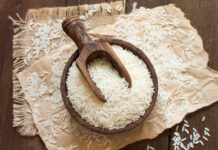
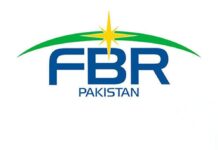





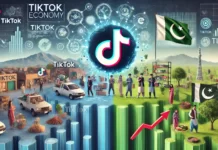





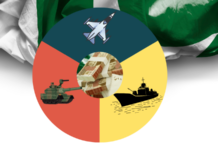
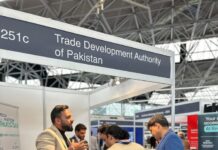



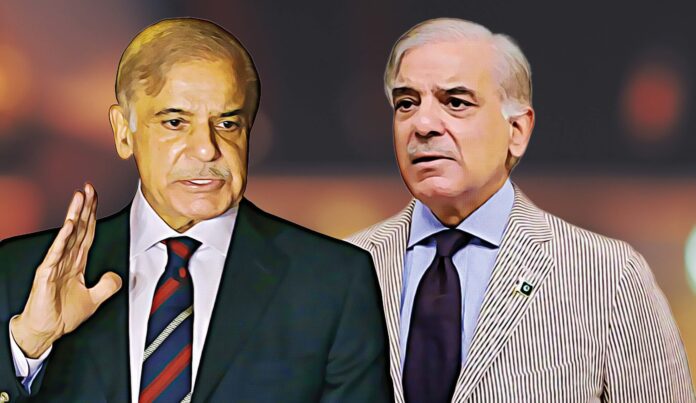





Shahbaz Speed has damaged Pakistan
Imran khan love ❤️😘 click here 🙏
Good Its Very Amazing